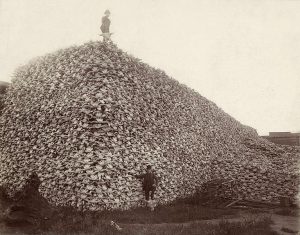Overharvesting and Exploitation
Broadly speaking, overharvesting and exploitation is considered the second greatest threat to biodiversity. However, for some species, like freshwater turtles in Asia, it is the lead threat to extinction. Fishing, hunting, logging, and grazing are typical resource-extraction activities, but exploitation of species can also occur through biomedical uses, pet trade, and use as status symbols. Economic and cultural aspects linked to processes of colonialism and economic growth have historically driven the overexploitation of ecosystems.
The chapters in this section explore different forms and reasons behind overexploitation. Biomedical uses are explored in the chapters on the use of shark squalene for vaccines, the use of horseshoe crab in toxicity testing of vaccines, and the harvesting of ginseng for medicinal uses. Students also investigated the emptying of our oceans for food resources, using Atlantic cod and Atlantic Bluefin Tuna as case studies for a future with sustainable fishing practices. Finally, one team of students took a broader approach and linked issues of wildlife trade to exposing human health.

harvesting a renewable resource to the point of diminishing returns
